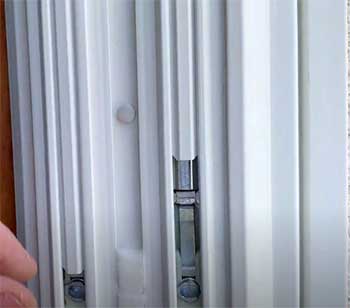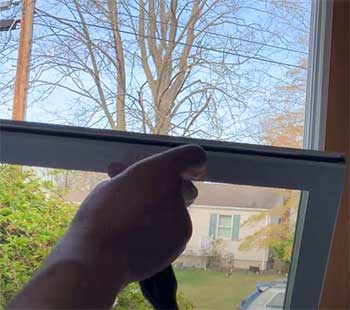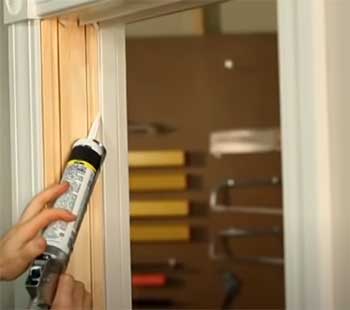The Andersen Narroline window, first introduced in 1956, is an iconic window design that is still found in many homes today. Narroline windows feature a distinctive narrow frame and sash, allowing more glass area and sunlight into the home.
While sturdy and long-lasting, many original Narroline windows are now in need of replacement or upgrading. This is where Andersen Narroline conversion kits come in.
A Narroline conversion kit allows you to replace the sash and other operating components of your original Narroline windows while retaining the existing window frame. This can be a cost-effective alternative to full window replacement.
Problems With Andersen Narroline Conversion Kit
Some homeowners encounter problems when installing these conversion kits. Here is a list of them:
- Difficulty Removing Old Sash and Hardware
- Incompatible Jamb Liners
- Balancing Issues With New Sash
- Air and Water Leakage Around Sash
- Difficulty Accessing Lower Sash Tilt Feature
- Problems Installing Exterior Trim and Stops
- Difficulty Matching Historical Appearance
- Narroline Window Conversion Cost Considerations
- Ongoing Maintenance Considerations
Let’s elaborate these problems.
Difficulty Removing Old Sash and Hardware

The first challenge often comes when you attempt to remove the old sash (the part of the window that holds the glass panes) and hardware such as balances.
Over decades of use, the old sash can become stuck or painted shut.
The sash also becomes heavier as layers of paint build up over time.
Attempting to pry the old sash loose can result in breaking the fragile wooden rails and stiles.
The original hardware is also often rusted or painted into place. Andersen includes new hardware with the conversion kits, but you first have to remove the old parts. This usually requires breaking painted joints and using lubricants to loosen frozen hardware. Frustrated DIYers may damage window components in the process.
Solutions:
- Use wood chisels, putty knives, and heat guns to gently free stuck sash and hardware. Avoid prying forcefully with screwdrivers.
- Apply penetrant lubricants like WD-40 a day or two before disassembly to allow time to soak in and loosen parts.
- Remove sash gently and have any broken rails or stiles professionally repaired before installing the retrofit.
Incompatible Jamb Liners
Once you get the old sash removed, the next step is inserting new jamb liners that allow the sash in the conversion kit to operate properly. However, the new liner dimensions may not align correctly with the existing window frame.
Some homeowners find that the new liner is too narrow, allowing the sash to shift from side to side in the frame. Others have the opposite problem, with a jamb liner that is too wide, jamming tightly against the stops when closing the window.
Solutions:
- Carefully measure window frame openings before ordering conversion kits. Andersen can custom size liners if original frames are out of spec.
- Add plastic shims to take up any extra space between new liners and frame.
- Sand or plane liner edges for a tighter friction fit if too loose.
Balancing Issues With New Sash

The Narroline conversion kits come with new block-and-tackle balances to hold up the lower window sash.
However, these new balances may not provide the same smooth operation as the original balances that came with the window.
Some users report that the sash feels too loose and slides down too easily when opening the lower window.
But in other cases, the sash feels too tight or stiff when operated. This makes the window difficult to open and close.
Solutions:
- Make sure balances are correctly installed per Andersen instructions. Poor setup can cause balancing problems.
- Adjust tension on balances by stretching/compressing balance spring if too loose/tight.
- Clean and lubricate balance shoe and track to ease operation.
Air and Water Leakage Around Sash
Even after careful installation, some converted windows end up with air and water leaks around the sash. Gaps open up between the sash and frame, or between upper and lower sash, leading to energy loss and potential water intrusion when it rains.
This leakage indicates that the sash is not sealing tightly within the frame and against the jamb liners. Sash misalignment, frame settling, hinge wear, and paint buildup can all cause loss of proper fit and sealing.
Solutions:
- Inspect for sources of sash/frame gaps and misalignment. Adjust sash position or shim to realign if needed.
- Install quality weathersealing around sash and frames to close gaps. Use materials like polyethylene foam and silicone sealants.
- Sand or scrape built up paint layers that interfere with sash operation and sealing.
Difficulty Accessing Lower Sash Tilt Feature
Andersen Narroline retrofit kits allow the lower window sash to tilt inwards for easy cleaning and maintenance. But some users complain that the tilt latches are difficult to access and operate once the kits are installed.
The issue stems from the latch access ports cut into the jamb liners. If these are not positioned properly, or get blocked by the frame stops, it makes the latches hard to reach when tilting the sash.
Solutions:
- When test fitting liners, ensure access ports fully align with tilt latches.
- Adjust frame stops if blocking easy access to latches.
- Extend port size if necessary to improve finger clearance to latches.
Problems Installing Exterior Trim and Stops
The original Narroline window frames may have undergone repairs or adjustments over the years that affect how well new exterior stops fit in the converted windows. The stops may be too tight or loose, resulting in gaps that disrupt proper trim alignment.
Trying to install misaligned stops can split wood, crack miter joints, and leave gaps between stops and frames. This allows rain leakage and air infiltration around the exterior trim.
Solutions:
- Carefully inspect frame condition and measure stop rabbets prior to installing retrofit.
- Use shims or fillers to take up any extra space behind stops for tight fit.
- Custom machine stops to proper dimensions if existing stop rabbets uneven.
Difficulty Matching Historical Appearance
For historically sensitive renovation projects, there may be strict requirements to match the profile and aesthetics of the original Narroline windows after conversion. Trying to replicate the vintage look precisely with modern replacement materials poses challenges.
The kits include new sash, jamb liners, and stops that likely differ in dimensions and details from the originals. Resulting disparities in sash width, frame depth, stop sizes, and muntin profiles can create an obvious mismatch.
Solutions:
- Seek customized components from Andersen if unable to match existing window aesthetics.
- Use wood appliques and decorative trim to conceal differences in frame profiles.
- Match paint colors and glazing characteristics closely to unify old and new materials visually.
Narroline Window Conversion Cost Considerations

In addition to installation challenges, the cost of Andersen’s Narroline conversion kits presents a hurdle for some homeowners.
Kit prices range from about $600 – $800 per window, with labor adding several hundred more per window.
This can easily exceed budget expectations.
By comparison, complete new Narroline window replacements cost only slightly more in some cases.
And unlike conversions, these new windows won’t be limited by the constraints and aging issues of the original frame.
However, conversions do allow you to retain the exterior look and frame intact. This might justify the added cost and effort for historically sensitive homes where the original appearance must be maintained. But for more typical homes, the conversion route often doesn’t make economic sense vs. full replacements.
Key Cost Factors:
- Number of windows being converted
- Customization needs
- Labor rates in your area
- Budget for repairs of unforeseen issues
Ongoing Maintenance Considerations
While conversion kits do renew the operating components of your Narroline windows, you still have aging wood frames that will continue to require maintenance. Problems such as decay, cracking, and leakage may necessitate additional repairs and upkeep down the road.
So the cost of conversions may not be a one-time investment. Repainting and resealing the retained frames, fixing new leaks, and replacing worn parts will be an ongoing requirement. At some point, the frame condition itself may dictate full window replacements.
Tips for Ongoing Maintenance:
- Inspect frames annually for any deterioration or leakage issues.
- Clean, prime, and repaint frames as needed to maintain protective coating.
- Re-apply high quality sealants around frames and sash.
- Replace any new sash/hardware reaching end of service life.
Frequently Asked Questions (FAQ)
That depends on your goals. For historically sensitive homes where the original look must remain intact, Andersen kits allow renovating the windows without replacing the frames. This preserves the aesthetic accurately. But for more typical homes, new full window replacements generally make better economic sense.
With proper maintenance and upgrades, the overall window lifespan can reach 50-60 years or more. The wood frames are very durable. The conversion kits replace the sash/hardware which typically wear out sooner. As long as the frame itself remains in good condition, the useful life can be extended significantly via the conversion process.
These kits are designed to upgrade existing Andersen Narroline windows without removing the frames. All the operating components like the sash, jamb liners, balances, and stops are replaced while retaining the original frames. This renews window operation while maintaining structural integrity and aesthetics.
Narroline is an iconic Andersen window style featuring thin frames and sash. First introduced in 1956, the sleek design and excellent craftsmanship make Narroline windows highly valued today. Many mid-century homes still retain these windows which allow more glass area for natural lighting compared to other designs.
In Conclusion
For many homeowners with original Andersen Narroline windows, conversion kits offer an appealing option for renovation while preserving architectural authenticity.
However, realizing success with these retrofit products requires careful evaluation of both your existing window conditions and realistic budget.
Patience and proper installation technique are also a must when working with aging components. In homes where structural integrity or aesthetics are less critical, full window replacement may provide better performance for the investment.
But the conversion kits do present a solid solution for extending the service life of these classic windows.

